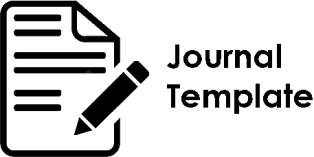Asalib Ta’allum al-Mu’allimy al-Dirasat al-Islamiyah Fi al-Dirasat al-‘Ulya
DOI:
https://doi.org/10.29240/ajis.v4i1.846Keywords:
Learning style, Graduate student, Teacher, Islamic educationAbstract
This study describes and identifies the learning styles of teachers who are undergoing a postgraduate course in Islamic studies. Using the quantitative descriptive method, with 27 subjects in the research subject, there is a second semester of the academic year 20018/2019 postgraduate program at Raden Rahmat Islamic University Malang, Indonesia. Data collection techniques used in this study were observation, interview, and documentation. The interview used was designed with limited answers. The results showed that 100% of students use information technology (such as Google search engines) to do tasks. 63.6% of students preferred to use book references and 36.4% preferred to search the internet. The learning media that are the choice of students are 54.5% in the form of textbooks, 27, 3% videos, and 18.2% power points. 54, 5% of students read books every day, 27, 3% when doing assignments and 18.2% once a week. With interest in the high reference book; 90.9% of students chose to enjoy learning to use social media and e-learning, and only 9.1% did not like it.
Downloads
References
A Chris, “Top 10 search engines in the world,” 2018
Bafadal, Ibrahim. Manajemen Peningkatan Mutu Sekolah Dasar Dari Sentralisasi Menuju Desentralisasi, Jakarta: Bumi Aksara, 2003
Bire, Arylien Ludji. Uda Geradus, Josua Bire. Pengaruh Gaya Belajar Visual, Auditorial, Dan Kinestetik Terhadap Prestasi Belajar Siswa. Jurnal Kependidikan: Penelitian Inovasi Pembelajaran Vol 44, No 2 DOI 10.21831/jk.v44i2.5307. https://journal.uny.ac.id/index.php/jk/article/view/5307DePorter, B. & Hernacki, M. 2000. Quantum Learning. Edisi Revisi. Bandung: Kaifa.
Deporter & Hernacki, 2000. Quantum Learning. Edisi Revisi. Kaifa, Bandung.
Haryanto, S. (2011). Belajar dan Pembelajaran. Bandung: Remaja Posdakarya.
https://www.youthcorpsindonesia.org/l/peringkat-pendidikan-indonesia-di-dunia/.
Indonesia Educational Statistics In Brief 2015/2016. http://publikasi.data.kemdikbud.go.id/uploadDir/isi_AA46E7FA-90A3-46D9-BDE6-CA6111248E94_.pdf
Kemenristekdikti, “Sistem Pembelajaran Daring Indonesia (SPADA Indonesia),” 2018
Kemenristekdikti. (2016). Panduan Penjamin Mutu Proses Pembelajaran Daring (PDITT). Jakarta.
Samsuardi, Menajemen Pengembangan Sumber Daya Guru Pada Lembaga Pendidikan Madrasah. PIONIR: Journal of Education Vol 5, No 1 (2016). http://jurnal.ar-raniry.ac.id/index.php/Pionir/article/view/172
Siemen, G. (2005). Connectivisme: A learning theory for digital age. International Journal of Instructional Technology and Distance Learning, 2.
Ula, S.S. 2013. Revolusi Belajar: Optimalisasi Kecerdasan Melalui Pembelajaran Berbasis Kecerdasan Majemuk. Yogyakarta: Ar Ruzz Media.
Downloads
Published
How to Cite
Issue
Section
Citation Check
License
Authors who publish with this journal agree to the following terms:- Authors retain copyright and grant the journal right of first publication with the work simultaneously licensed under a Creative Commons Attribution License (CC BY-NC-SA 4.0) that allows others to share the work with an acknowledgment of the work's authorship and initial publication in this journal.
- Authors are able to enter into separate, additional contractual arrangements for the non-exclusive distribution of the journal's published version of the work (e.g., post it to an institutional repository or publish it in a book), with an acknowledgment of its initial publication in this journal.
- Authors are permitted and encouraged to post their work online (e.g., in institutional repositories or on their website) prior to and during the submission process, as it can lead to productive exchanges, as well as earlier and greater citation of published work (See The Effect of Open Access).








